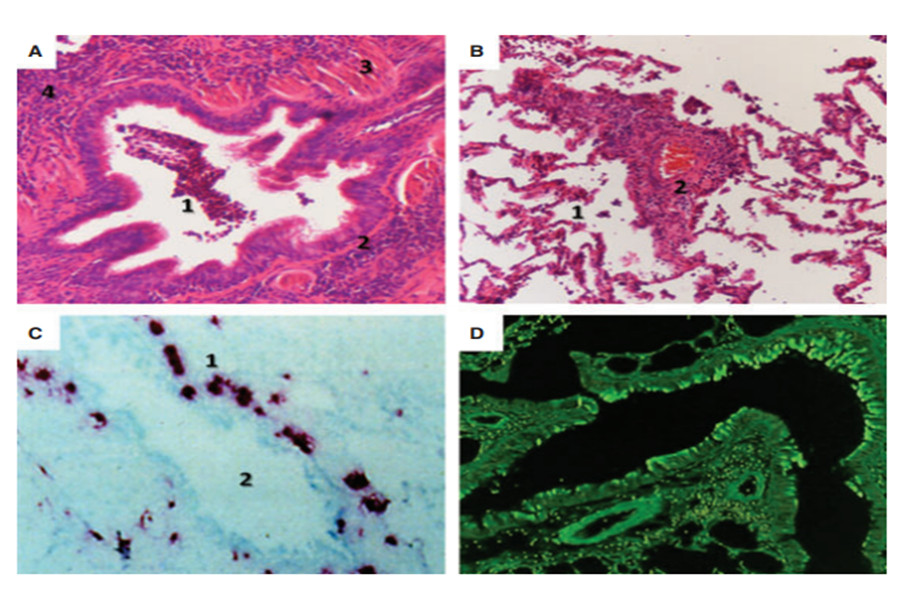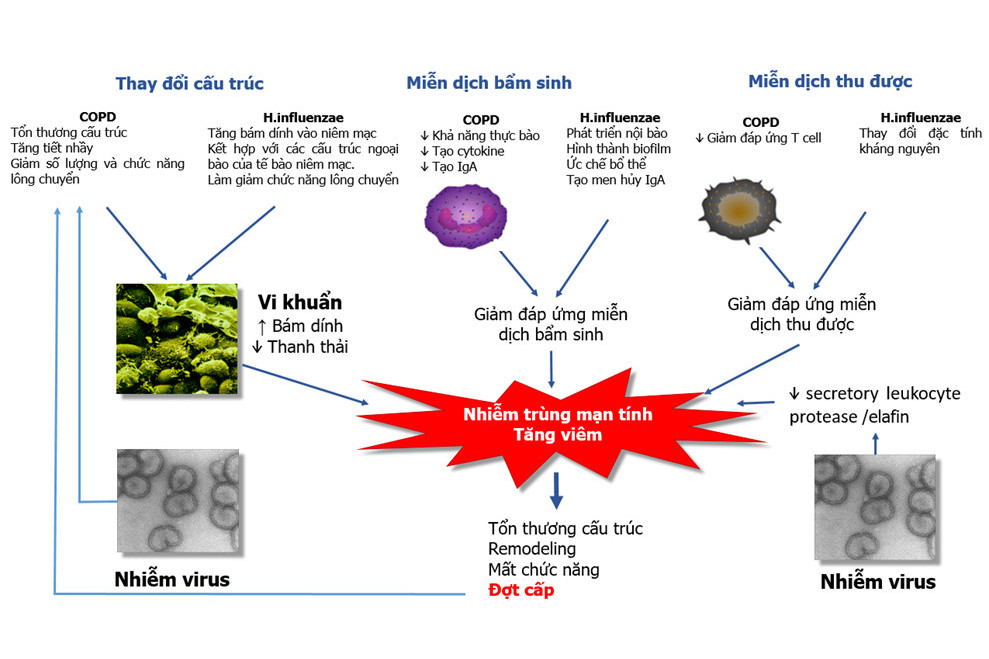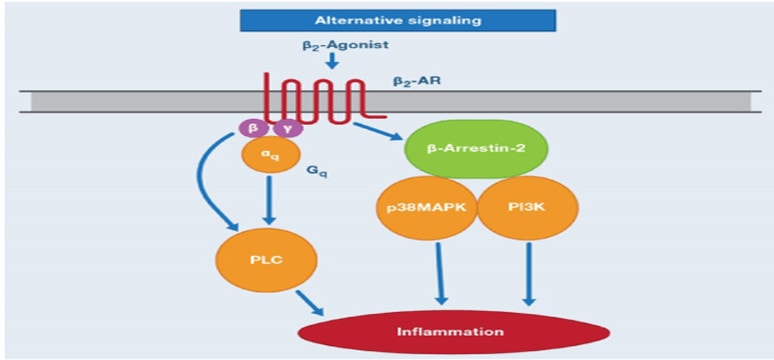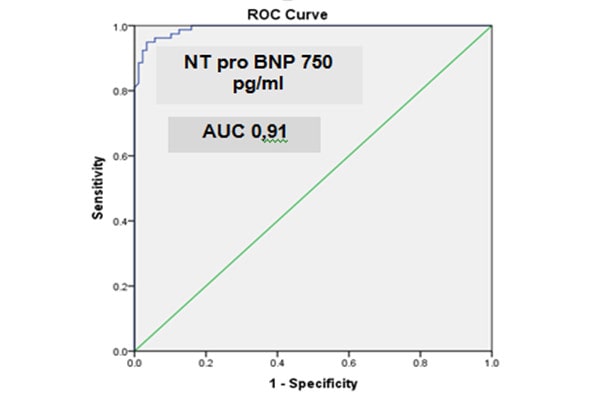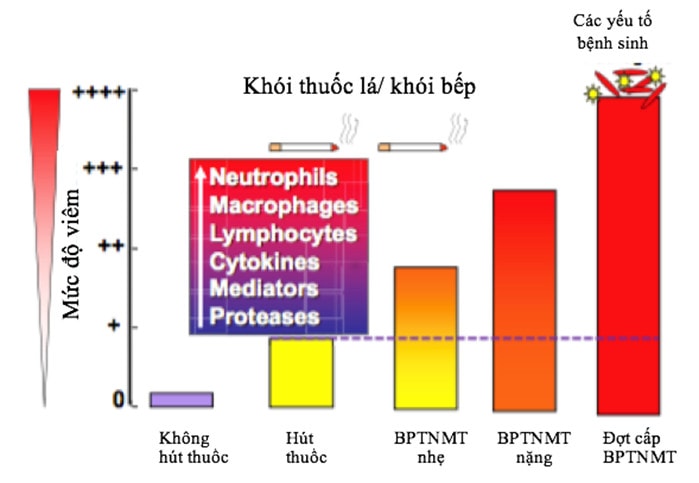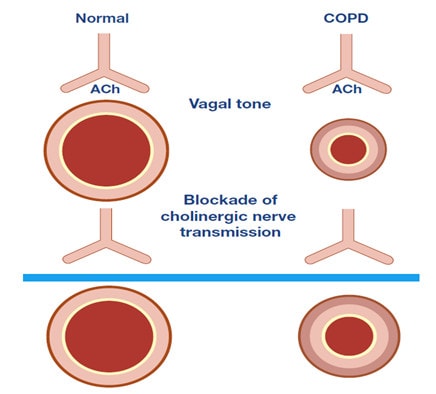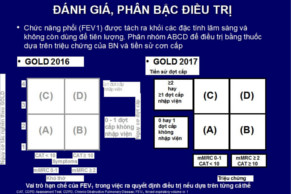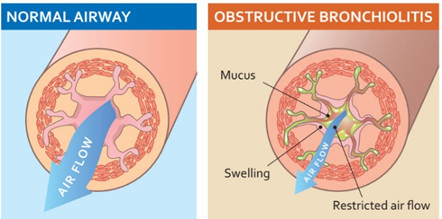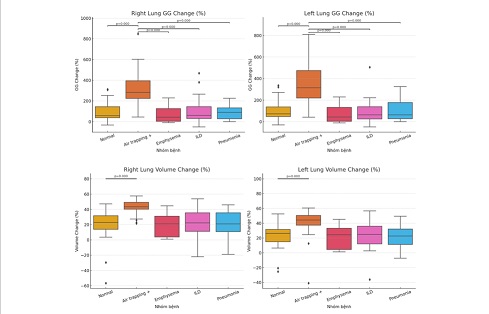- Chi tiết
-
Được đăng: 09 Tháng 10 2015
Is the ‘spatially matched central airways’ relevant to studies of airway dimensions in COPD?
We read with interest the comparison of spatially matched airways which reveals thinner airway walls in COPD than in controls by Smith et al.1 While we find these results interesting, we wonder about the approach taken.
First, grouping airway segments from the five prespecified paths in one given gener- ation number (table E1) would dismiss regional differences in airway structure.2 For example, RB1 is very likely different from right lower lobe bronchus (RLL) prox- imal to RB7 in the 3rd generation while RB1 subsegments are different from RLL distal to RB7 in the 4th generation. The fact that the unadjusted airway wall area (Aaw) is not different between COPD and controls until the 3rd generation (table 2) suggests grouping ‘central’ airways leading to the lower lobes with segmental airways in the upper lobes may be affecting the results. We are not sure what the adjusted Aaw is showing because it is adjusted for so many variables.
Second, we are unsure about the airway count data. The authors claim that more proximal airways were measured in COPD. We found these data confusing. What role would having less distal airways available for measurement have on the results? The software used in this study usually segments fewer airways in the lower lobes in COPD than in controls because the effects of motion artefacts are greater in COPD than in controls. It would be interesting to see if Aaw was compared regionally between COPD and controls3 and number of subjects with incomplete segmental or subsegmental bronchi— mostly COPD subjects with thickened airway wall—was accounted for.
Finally, we wish to take issue with the authors on the use of the term ‘bias’. The authors seem to suggest that measurement approaches that do not include large central airways in their analysis are biased. Since the results are so different (opposite) when the authors compare Aaw by lumen size compared with by anatomical name, though lumen size is a more functionally important measurement, we wonder if ‘bias’ is a correct word to use and if, in fact, the authors’ approach is not biased as well. Because airflow is determined by lumen diameter, we think that lumen area should be taken into account rather than generation number or anatomical name when comparing Aaw between subjects. If this is correct, then the results in table 2 are biased while the results in table 3 are more reasonable.
Yasutaka Nakano,1 Nguyen Van Tho,1 Harvey O Coxson2
1 Department of Respiratory Medicine, Shiga University of Medical Science, Otsu, Japan
2 Department of Radiology, Vancouver General Hospital, Vancouver, Canada
Linked
▸ http://dx.doi.org/10.1136/thoraxjnl-2014-205160
▸ http://dx.doi.org/10.1136/thoraxjnl-2014-206188
REFERENCES
-
Smith BM, Hoffman EA, Rabinowitz D, et al. Comparison of spatially matched airways reveals thinner airway walls in COPD. The Multi-Ethnic Study of Atherosclerosis (MESA) COPD Study and the Subpopulations and Intermediate Outcomes in COPD Study (SPIROMICS). Thorax 2014;69:987–96.
-
Hsia CC, Hyde DM, Ochs M, et al. An official research policy statement of the American Thoracic Society/ European Respiratory Society: standards for quantitative assessment of lung structure. Am J Respir Crit Care Med 2010;181:394–418.
-
Washko GR, Diaz AA, Kim V, et al. Computed tomographic measures of airway morphology in smokers and never-smoking normals. J Appl Physiol 2014;116:668–73.



